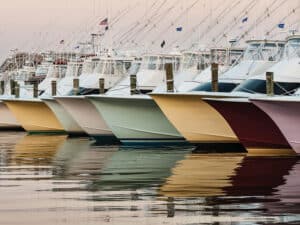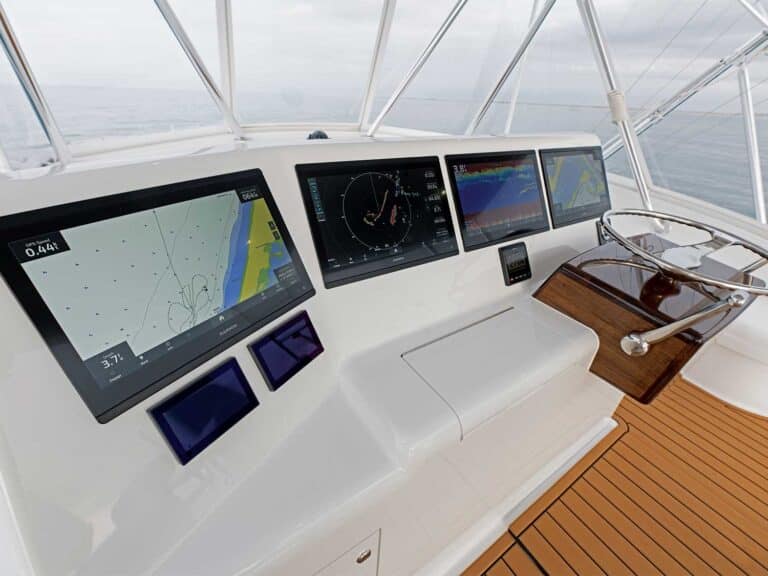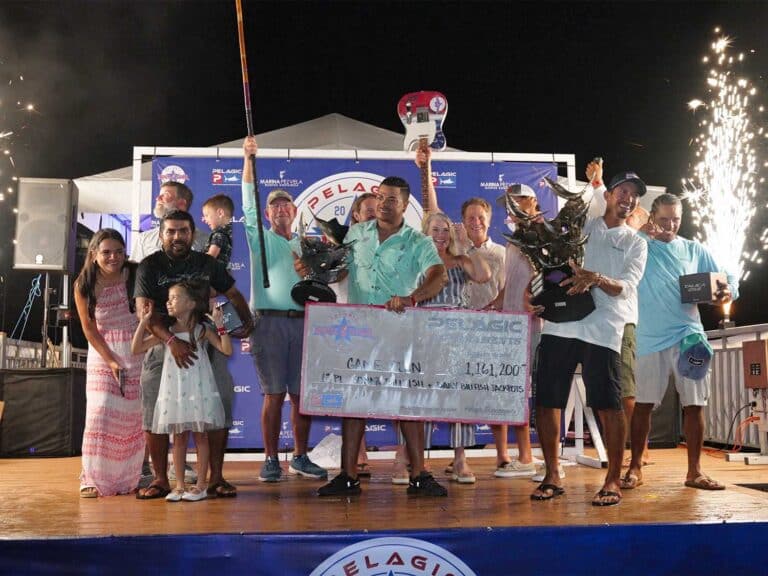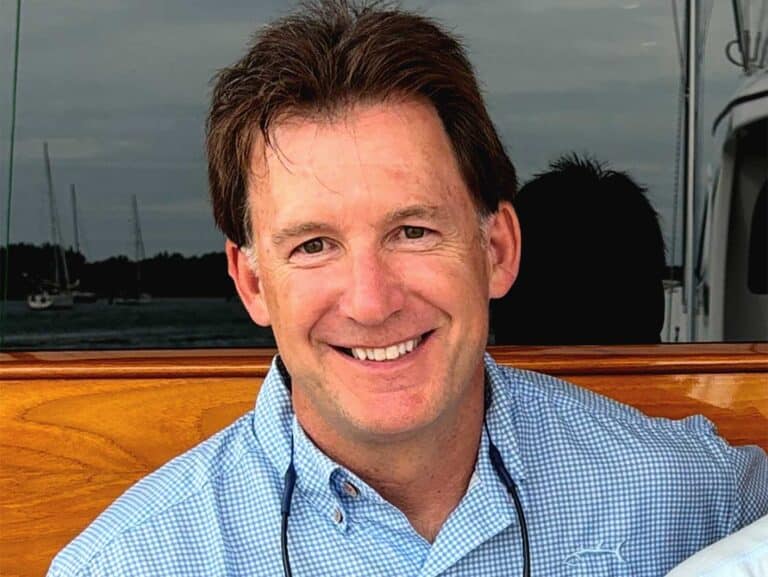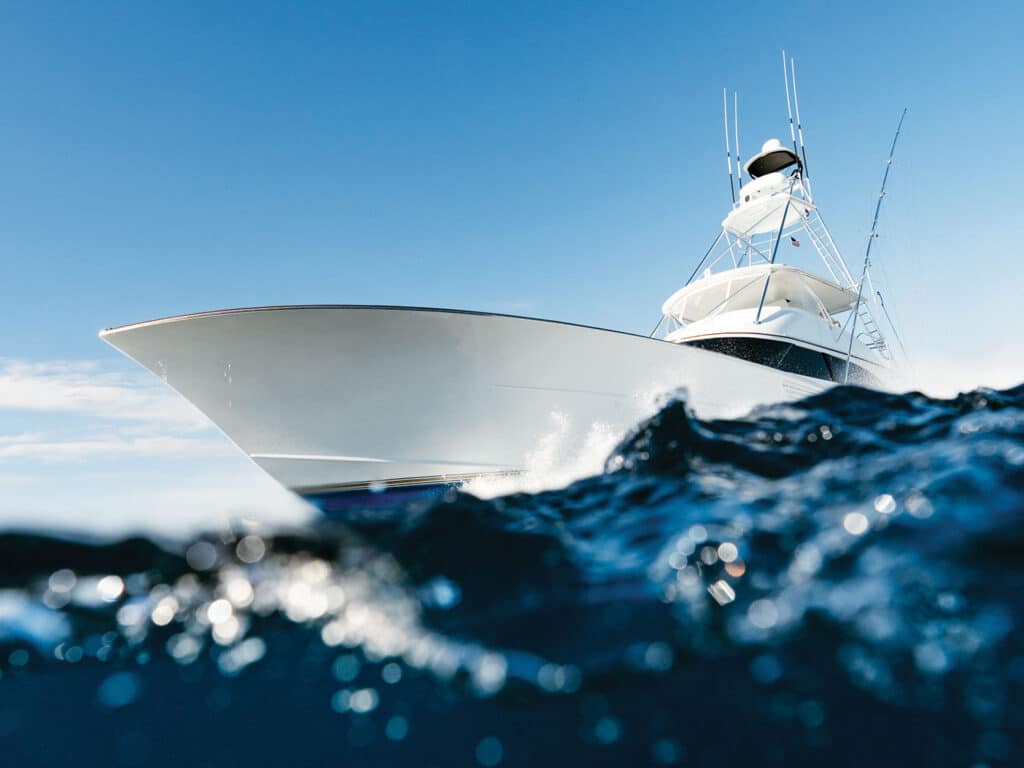
Special delivery: Sign up for the free Marlin email newsletter. Subscribe to Marlin magazine and get a year of highly collectible, keepsake editions – plus access to the digital edition and archives.
Sport-fishing boats are a lot like horses. That’s not just because they share a measure of power, are a good ride, or often place lofty demands on our wallets. Unless you’ve got a trained eye to identify the differences between various boats—or a herd of horses—the only thing that helps each one stand apart from the other, for the casual onlooker anyway, also often boils down to color and size.
As a marine-industry writer and photographer, as well as a lifelong equestrian, I’ve always enjoyed the overlap between horse owners and boat owners. I hadn’t ever really considered the comparison so plainly until I found myself chatting with Spencer Yachts’ Daniel Spencer. While discussing what features make a Spencer different from others, he says: “You might be able to tell me the breed and a whole lot of other things about a horse standing in a field just by looking at it, but I’d only be able to tell you that it looks like an Indian pony in a Western movie. It can be hard to explain how you know the difference, but you just do, and that’s how it can be with North Carolina’s boats.”
As modern sportboats have evolved over the years, identifying who built what has become more arduous, even for the experts. When I spoke with builders Tim Winters, Paul and Daniel Spencer, Ricky Scarborough Jr., John Bayliss and Randy Ramsey, each agreed that this article would be a challenging one to write. Ramsey provided me heartfelt but honest warnings of the likely struggle ahead, while others seemed hesitant to share too much for fear of giving away a sacred trade secret. These men represent just a handful of North Carolina’s talented custom builders, but they do admit that seeing the differences in a lineup of sport-fishing boats is trickier now than it’s ever been before.
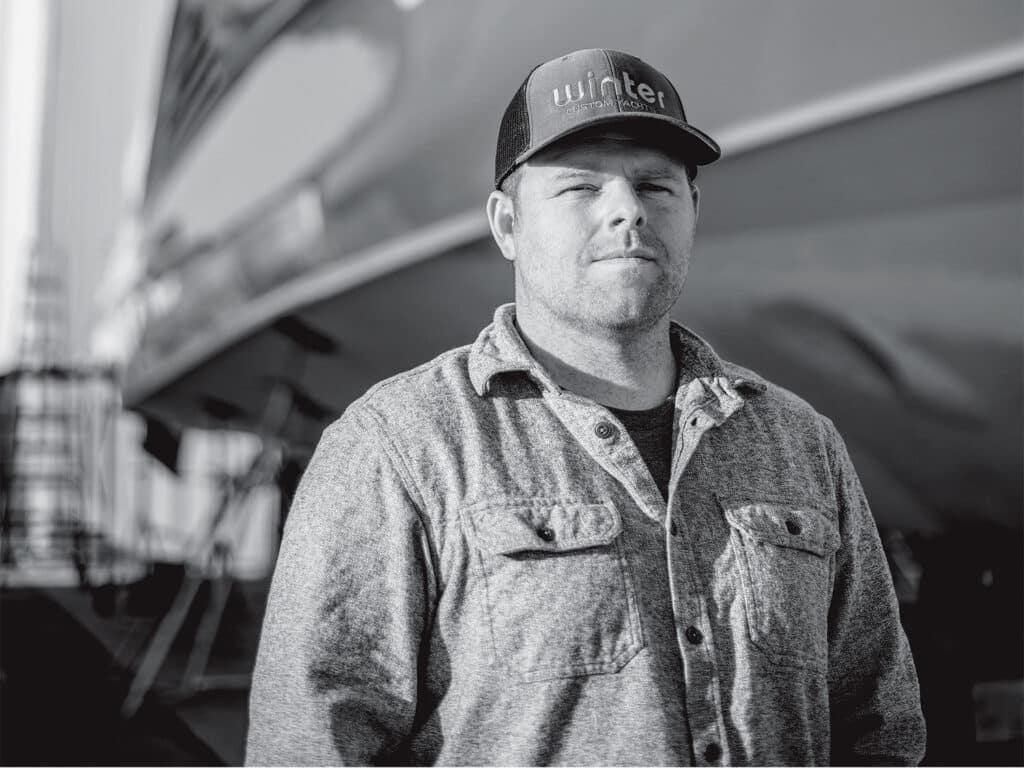
While North Carolina’s finest have constructed some of the world’s most impressive offshore-fishing machines in shops virtually next door to one another, my role in the industry has been photographing boats in a neighboring state. Before my first season working for the South Carolina Governor’s Cup Billfishing Series, a role I’ve enjoyed for the past seven years, I had nearly no experience with sport-fishers. Capt. Jim Reed, my chase-boat operator and now dear friend, was the first person to teach me how to truly see a boat by evaluating structural features and craftsmanship to determine the name behind the build.
That early education was filled with discussions of tumblehome, sheerline and flare, providing me with a toolkit of how to see the differences among all the pretty horses on the water. Even still, I’m no expert. It’s not uncommon for me to get confused when a collection of pearl, sea foam and yellow hulls emerge on the horizon. My grasp of builder terminology is limited, at best, but by using my observations through thousands of photographs, as well as input from friends and the builders themselves, I’ve found several features for identifying one modern North Carolina builder from another. Those details are discreet nuances in taste and design. But before we tackle the differences, we must first take a look back at how they all stem from the same tree—one rooted in what we now recognize as “classic Carolina lines.”
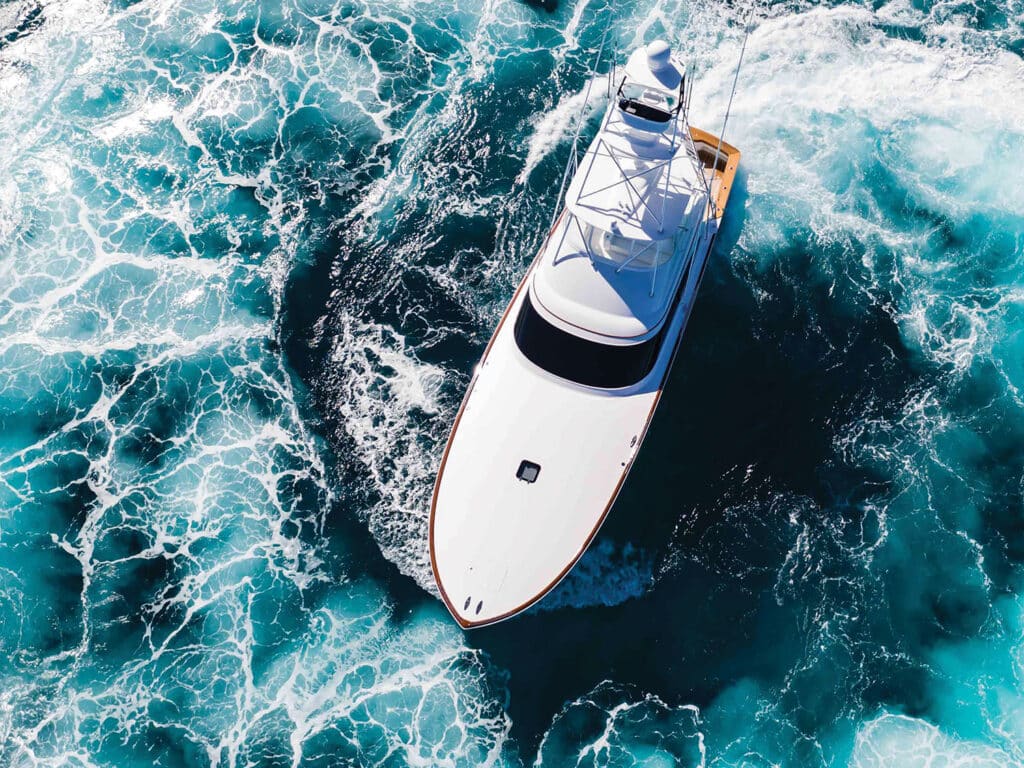
A Styled History
Following the hardships of World War II, the waterfronts of North Carolina welcomed the growth of their charter-fishing industry. “North Carolina saw a real surge of sport-fishers,” Ramsey says. “People started taking charters and enjoying time on the water. We saw boatbuilders start to change their methods as increases in horsepower put greater demands on the boats.”
By the 1970s, career boatbuilding established a solid foothold along the coast of North Carolina. At first, professional fishermen, such as Warren O’Neal, Buddy Davis, Sunny Briggs, Ricky Scarborough Sr., Omie Tillett, Buddy Cannady and others, built boats out of necessity; they couldn’t afford to buy new charter boats, so they chose to build the vessels themselves instead.
Inspired by already well-established Florida builders, North Carolina’s eager craftsmen began tailoring their builds to fit their fishery, one often plagued by rough seas, long rides to the Gulf Stream, and treacherous inlets. “My dad idolized the Ryboviches, as did O’Neal and Tillett,” Scarborough says. “He and the other builders wanted their boats to be seaworthy, dry, perform well, and handle fish. Even today, most people would recognize a classic Carolina boat for its seaworthiness and, of course, its flare.”
A generous amount of bow flare and a broken sheer (where the sheerline of the toe rail curves down at the point where the covering board meets the bow deck) are perhaps the two most immediately noticeable elements of the old-school approach. The boats built in the ’70s were extremely curvy, and when looking at one of them head-on, the hull grandly sweeps outward to the point of exaggeration. “You gotta have curves to have any sex appeal,” Winters says with a laugh. “We get that right here in North Carolina. Twenty years ago, I wanted a lot of tumblehome and flare—the more, the better. But my eye has evolved, and after running more boats, I prefer a more moderate look now. Some of us like bigger features than others, but at the end of the day, the North Carolina boats are shapely and sleek.”
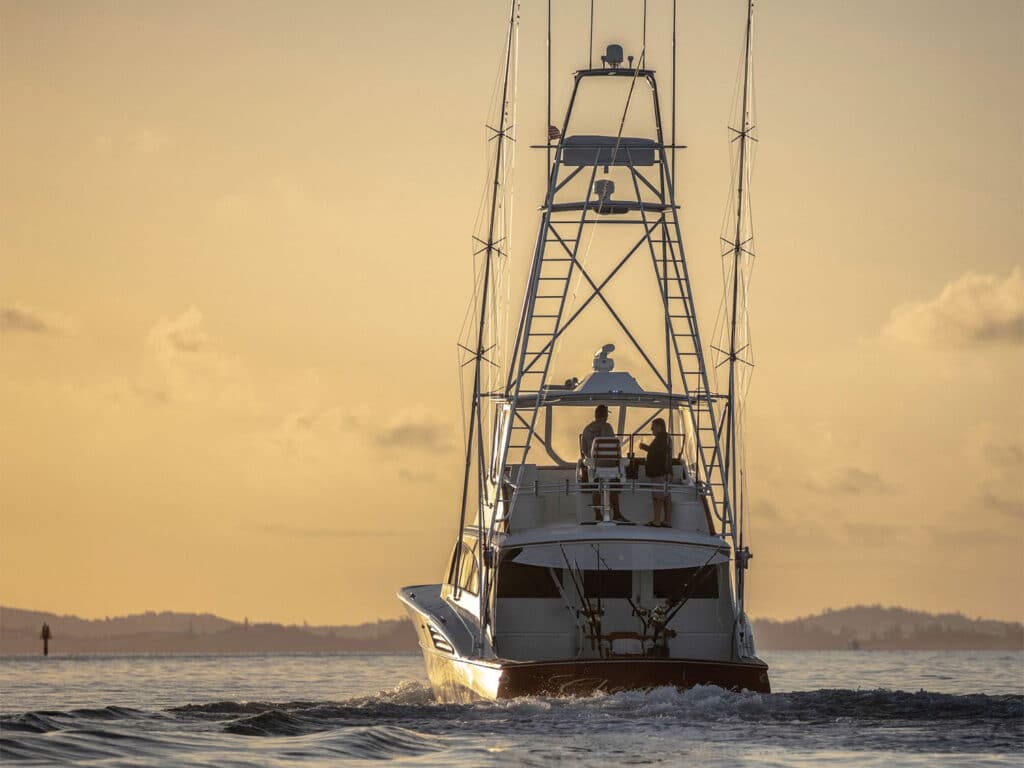
If you stumbled upon a perfect lineup of one of each builder side by side, it would be easier to describe the measure of its broken sheer compared to its neighbor. A comparison of the abruptness—or the softness, conversely—of the broken sheer, is far easier to describe when using qualifiers.
In some of its most recent hulls, Jarrett Bay seems to be turning away from this, but I would argue that it has maintained the greatest degree of broken sheer among North Carolina’s modern builders. While still soft compared with boats built in the ’70s, Jarrett Bay showcases a more significant break than its neighbors. Scarborough, Winters and Spencer builds fall somewhere in the middle of the pack, with the softness to the broken sheer increasing in the order listed. The broken sheer on a Spencer build usually occurs farther back than what’s seen among other builders. To me, Bayliss has the softest break of the group. That said, these slight differences can vary from build to build, depending on a customer’s preference or what a builder deems best for the lines of the boat. In fact, this whole article might later become obsolete due to the highly adaptive nature of custom boatbuilding.
Evolving Lines
These six builders all agreed that current North Carolina builds are a whole new breed of boat. They still maintain some measure of flare and broken sheer, but today’s builders prefer a greater subtlety overall. The curves are still there, but the lines have grown sleeker, with minimal interruption in flow from bow to stern. The profile of these boats has evolved from having a distinct break in the classic Carolina sheerline to what is now a single, swift and smooth brushstroke from one end of the canvas to the other, making them look damn fast.
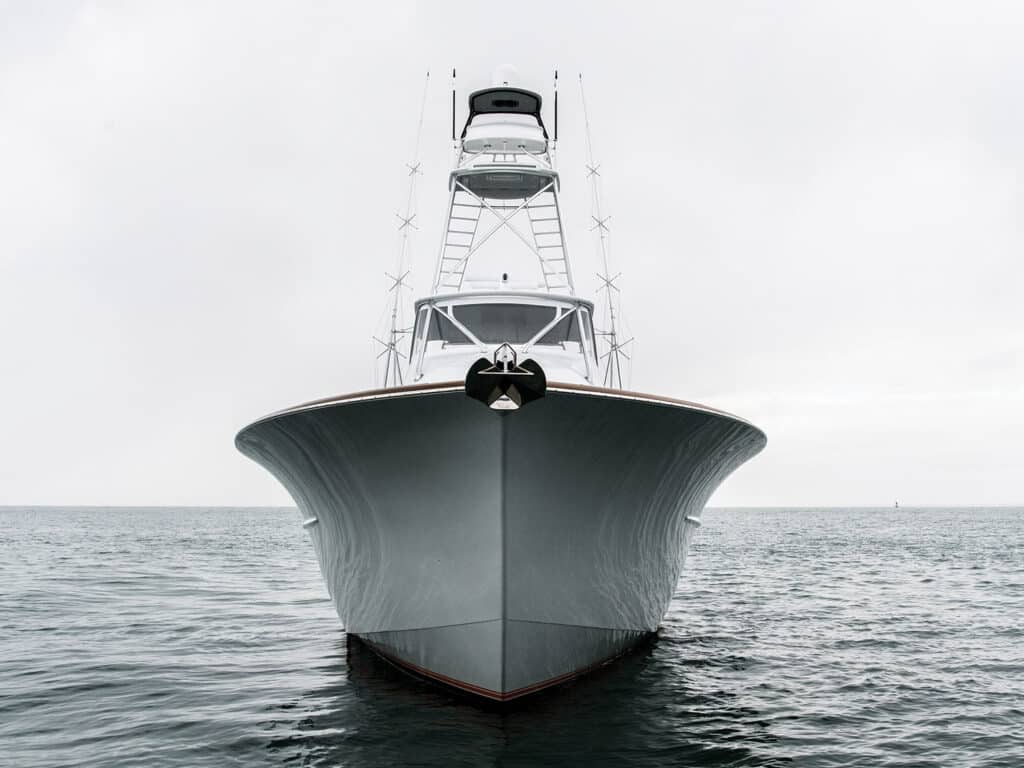
The new style, in varying degrees, comes from a mix of outside inspiration and practicality. “I think Garlington and Spencer drove this evolution,” Scarborough explains. “That’s what people liked, and that’s what the market wants. I still find that older profile equally pretty; it brings me back to my roots. The only similarity between boats Scarborough builds today and those first builds are that they float. They’re not the same at all. We’re just trying to grow and improve continuously. Our newer boats flow, with no hard edges and corners, which is true for everyone now.”
“Every single guy has his interpretation of what he likes and what separates his work from someone else’s,” Bayliss says. “If you’re a student of offshore fishing, you start to notice what you like and what you want to have in a boat. Our goal was to build something that was different and unique to us. We liked many features in Florida’s boats, such as Garlington’s rounded cabin, as well as classic features found in North Carolina’s boats, with some of our own twists to those designs. We wanted to blend those characteristics so folks would see a beautiful boat but couldn’t quite put their finger on where it came from.”
The modern-boat look, while beautiful and sleek, also has some practical benefits. Available space is critical, especially with ever-advancing technologies. “The more flare you have, the less interior space you have to work with; and if you put in a lot of tumblehome, you lose room in the cockpit,” Winters explains. “You can still achieve a good-looking boat and not be over the top with those features. Plus, the boats look faster without the exaggerated curvature. The future is fast and efficient.”
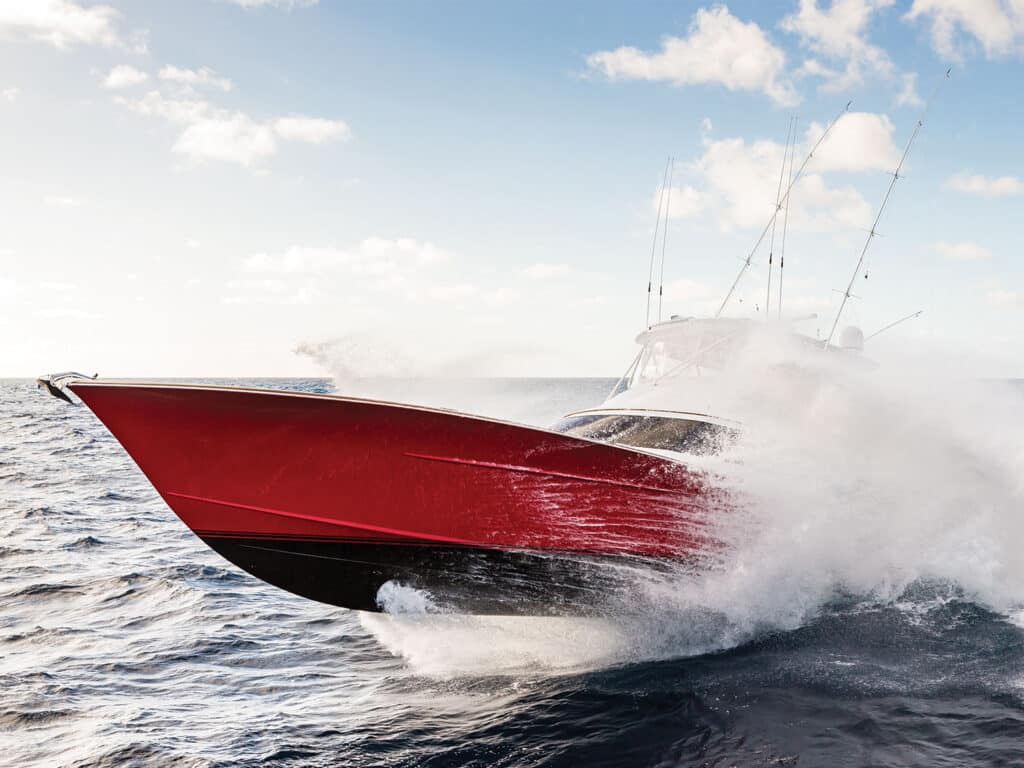
Window of Opportunity
When looking at a boat’s profile with an enclosed salon, otherwise referred to as a convertible, take note of the side windows’ nuances. Details in the shape—the way they curve aft or come to a point—can be used to identify the builder. These subtleties can be easy to miss, especially with boats running at 40 knots. When I gently prodded Scarborough to describe the shape of his windows, he explained that it would be difficult because his windows have evolved significantly, even in recent years. I playfully warned him that he might laugh at my interpretation and description, one that was likely to bastardize his carefully crafted work. But with great candor and assurance, he said: “I’d honestly be interested in hearing your interpretation. I think it’s good for builders to hear things like that.”
In general, a Scarborough window rounds out as you move toward the stern, while the top edge turns downward, making a shape similar to an abstract artist’s rendition of a cat’s paw. The lower window line follows the plane of the water and remains flat.
At Spencer Yachts, Paul still loves to leave his fingerprints on his particular window design. “Dad is still the godfather,” Daniel Spencer says. “He loves to cut windows out, approve the layout, or make little changes here and there.” The windows on a Spencer have a similar appearance to the current windows of a Scarborough; however, the lines taper to what I perceive as a narrower point. To make this even more complicated, Jarrett Bay is currently using a similar approach, except that its windows come to a sharper, more abrupt point toward the stern.
Much like Scarborough, Winters hasn’t nailed down one particular window line over the years. Of his 39 builds, many have been center-consoles or walkarounds, so the window layout isn’t always relevant. His upcoming builds currently propose a window that looks a lot like the Scarborough, Spencer and Jarrett Bay lines.
Bayliss, on the other hand, has taken an entirely different approach to windows, one inspired by a popular target species. “White marlin are one of my favorite fish,” Bayliss explains, “and the window line we picked for our builds was inspired by the fish’s pectoral fin.” The window gradually tapers off toward the stern, eventually narrowing to a rounded point that runs parallel with the waterline rather than the sheerline. Because the window line tapers from both the top and bottom edges, it almost gives the appearance that the window turns ever so slightly up and away from the sheer.
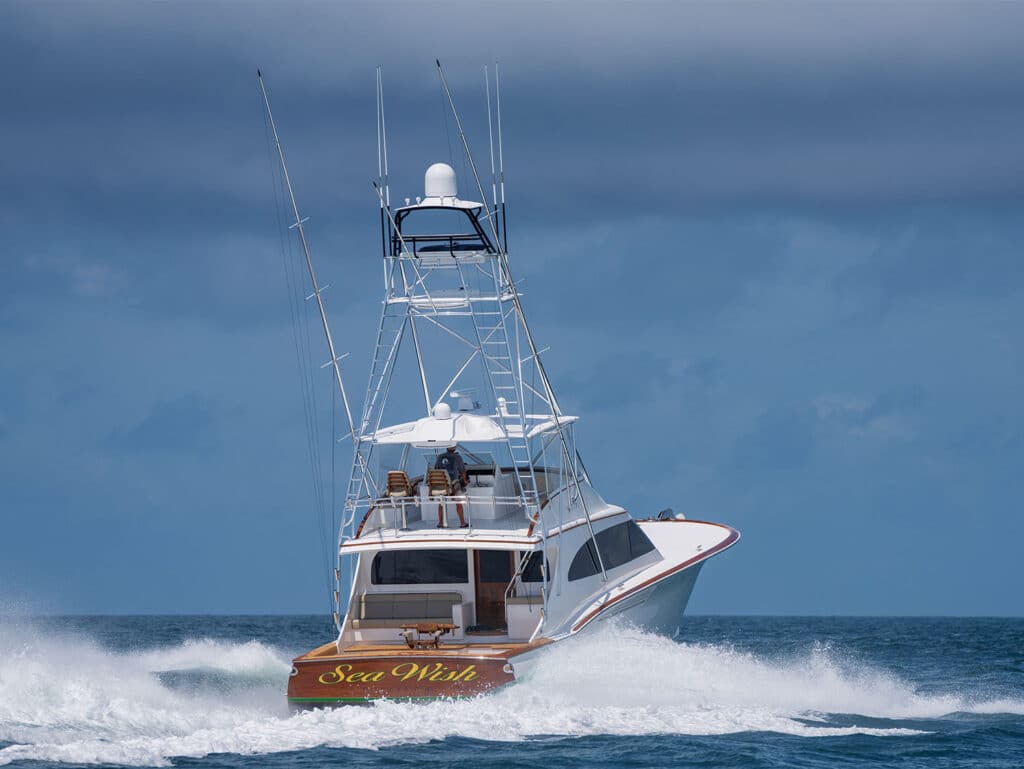
Other Nuances
Both bow flare and tumblehome are often best assessed from a head-on perspective. Jarrett Bay tends to emphasize flare and tumblehome, holding on to some of those beautiful characteristics that defined early classic Carolina lines. That’s not to say that Spencer and Winter don’t bring a moderate amount of flare and tumblehome to their boats as well, but Jarrett Bay seems to be the traditionalist of the group. Meanwhile, Bayliss and newer Scarborough builds have a far more reduced amount of flare and tumblehome.
Here, Winter Custom Yachts often stands apart from the group when looking closely at its transoms. “We build more belly into the stern of our boats, so our transom has more curvature,” Winters says. Take a look at the company’s Instagram account, and you’ll see what he means. The boats do round out at the stern, significantly enough to be used as an identifier along with other Winter traits.
Scarboroughs and Jarrett Bays tend to look thicker at the bottom than their counterparts, and much of that is likely due to the reduced flare in the Scarborough and the greater degree of tumblehome in the Jarrett Bay.
Carolina boats also have a style line called the intermediate guard, which runs along the hull and stops usually somewhere between the house and the bow. The intermediate guard is visible when looking at a boat from the side or head-on, and it helps to further accent the degree of flare and tumblehome in a build. Boats that aren’t quite as curvy, such as those from Scarborough and Bayliss, tend to look as if they have a more prominent intermediate guard. I can’t say with great certainty that there is an easy way to deduce a build based on the guard alone, such as standard length or angle, but when coupled with other features such as flare and tumblehome, I do think that the overall look the style line creates does help put the pieces together.
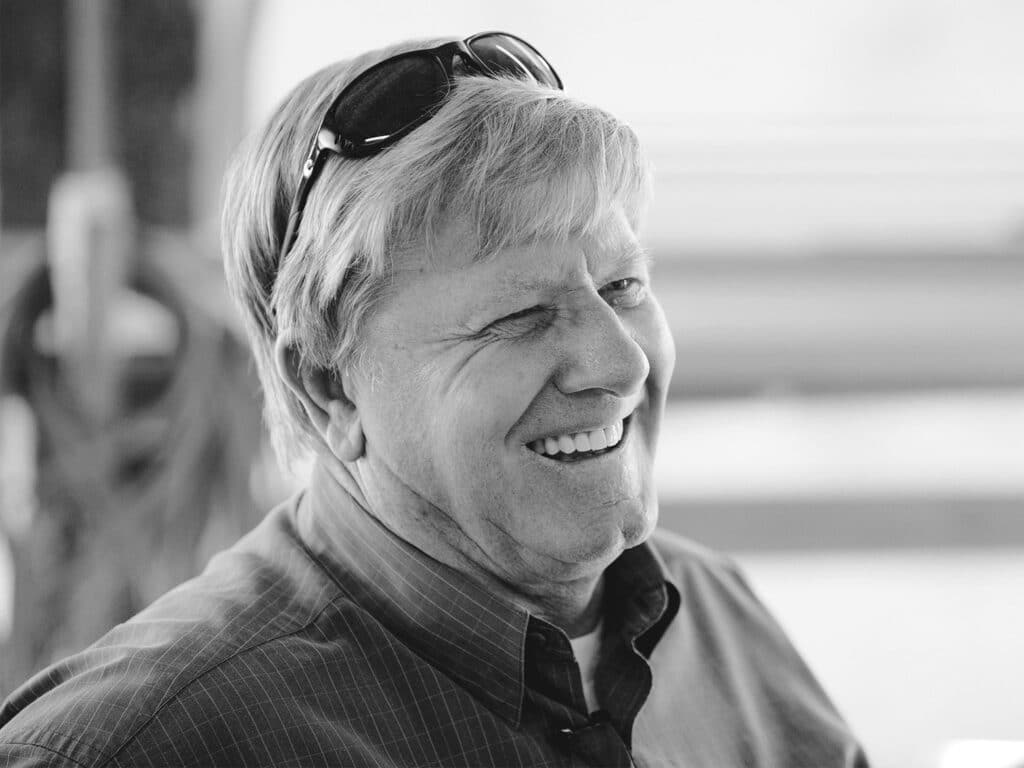
Piecing the Puzzle
All the captains, mates and builders I spoke to rely on the combination of windows, sheerline and engine-room vents when viewing a boat on the run to determine its make. Personally, I don’t find the vents to be a helpful identifier for North Carolina boats; they are far more revealing to me when looking at a Weaver, Rybovich or Tribute, for example. Instead, I focus on the windows, sheerline and a smattering of other unique features that might help me identify a North Carolina-built boat; it’s likely you’ll have to rely on a combination of features to correctly identify one of those boats as well. Piecing together attributes such as bow flare, sheerline, window shape and tumblehome is often enough to correctly identify a particular builder because these little indicators add up to paint the whole picture.
As builders adapt to the changing demands for performance and system inclusion, we can all expect to witness the continued evolution of the classic Carolina custom boat. “We spend a lot of time refining every single angle of the boat so that it looks just right,” Winters says. “But at the end of the day, we’re all still after that perfect boat.”
Read Next: Get to know Spencer Yachts founder Capt. Paul Spencer in our exclusive interview.
Although I’m not convinced that perfection could ever be attainable for these craftsmen, it’s clear that the goal posts continue to move and there’s a perpetual race to meet the next challenge. “Much of what makes these boats different is not visible from the outside,” Paul Spencer says. “There are a lot of boats out there that look like each other at this point, but everything you see on the outside is the result of 200 years of boatbuilders constantly evolving together.”
At least for now, we can celebrate the North Carolina builders’ differences without looking under the hood. And from afar, we can still tease out the features that make each one’s stable of prize thoroughbreds unique. Carry on.



